A week in the life of a Kimberley Beef Development Officer
Have you ever wondered what it is like to be an extension officer in northern Australia?
Today, you find out.
In this article, Sarah Gwynne, a Northern Beef Development Officer from the Western Australia Department of Primary Industries and Regional Development, shares her week with us, in WA’s picturesque Kimberley region.
Monday
I arrive at the Frank Wise Institute of Tropical Agriculture to begin the week. Our East Kimberley pain relief Producer Demonstration Site (PDS) will begin the first stage of the trial this week, so I’ve planned to complete all my office work in preparation for a busy few days in the field.
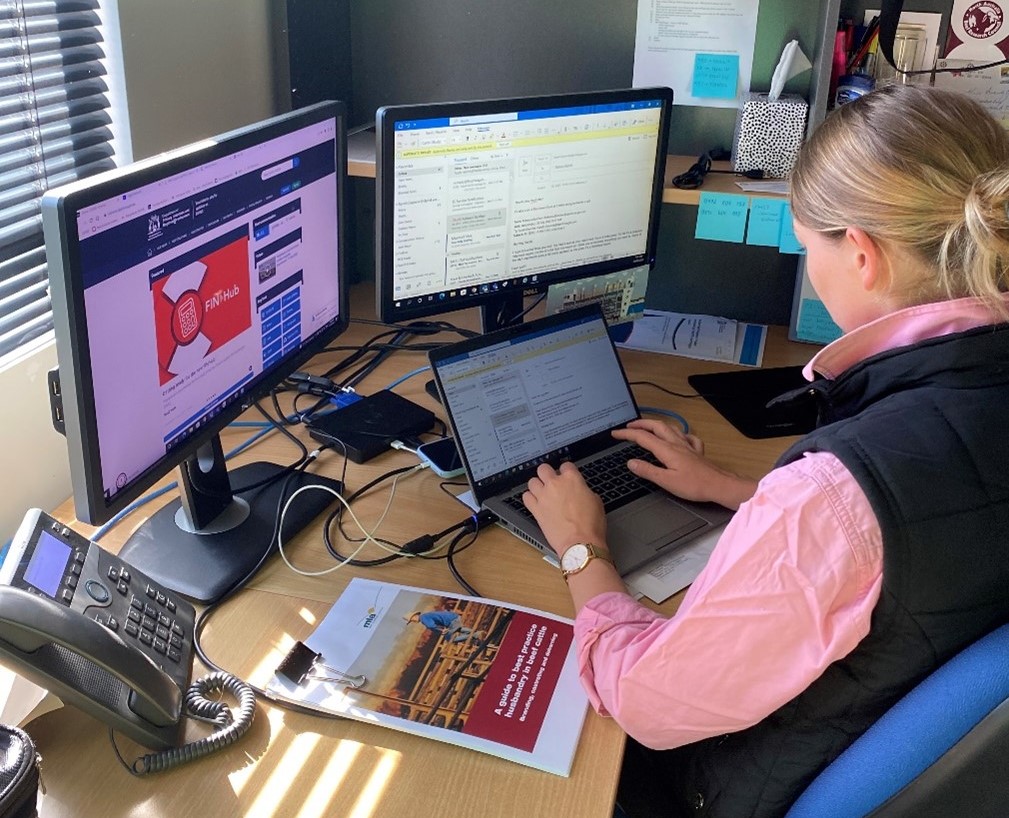
First up, is a meeting with the FutureBeef team to go over extension and communication activities for the month. Queensland, Western Australia and Northern Territory all contribute to the FutureBeef monthly e-bulletin, newspaper articles, social media, podcasts, videos, webinars and general website articles. Much of this content originates from research trials run by each state and territory department.
Next up this morning is a check-in with the WA Northern Beef Development team. There are six team members across several different regions. Charlotte and myself are based in Kununurra, Annie, Trevor and Fleur are in Broome and Bec works out of Moora. This is a weekly catch-up to track project progress and. This morning we’re preparing producer hosted workshops, our NBD Twilight forums.
In the afternoon, I complete administration tasks: corporate credit card requisitions, travel plans and book flights (time-consuming!). I also need to check in with some producers who we will visit in the Kimberley and Pilbara over the coming weeks.
The NBD project has contracted the Animal Genetics Breeding Unit (AGBU) from the University of New England to help WA producers select bulls suitable for their herds with the use of Estimated Breeding Values (EBVs). EBVs can help producers select for traits such as birth weight, days to calving and carcase weight.
My colleagues and I will travel to stations across the Kimberley and Pilbara to allow the researchers to get an idea of the WA northern beef industry and to gauge producer interest in EBVs. There are too many stations to visit in one trip so AGBU will be back again to run workshops and presentations for those interested.
Tuesday
This morning I prepare my weaner pain relief presentation for the East Kimberley Twilight Forum. Each Development Officer will provide project updates and give producers information on how they can incorporate best practice into their businesses.
 Later in the day, I check over all the equipment I need and make sure the cameras, GPS collars and accelerometers have full storage capacity with the batteries fully charged. I start packing the ute for the next few days and there are a few items I need to check-off:
Later in the day, I check over all the equipment I need and make sure the cameras, GPS collars and accelerometers have full storage capacity with the batteries fully charged. I start packing the ute for the next few days and there are a few items I need to check-off:
- Preparing the ute and checking recovery gear (spare tyres, pressure pump, winch, max trax)
- Preparing travel itinerary including communications and check in times.
- Preparing trial equipment:
- Meloxicam and applicators
- Tri-Solfen
- Hibitane
- ear tags and applicators
- accelerometers
- GPS collars
- oestrus activity paint to identify animals based on their random selection into a trial category
- data collection sheets
- GoPro cameras including batteries and chargers
- camera
Wednesday
I start the 6 hour drive to the commercial East Kimberley cattle station where the trial will be held. I take a quick stop for diesel in Halls Creek before pushing on to the station.
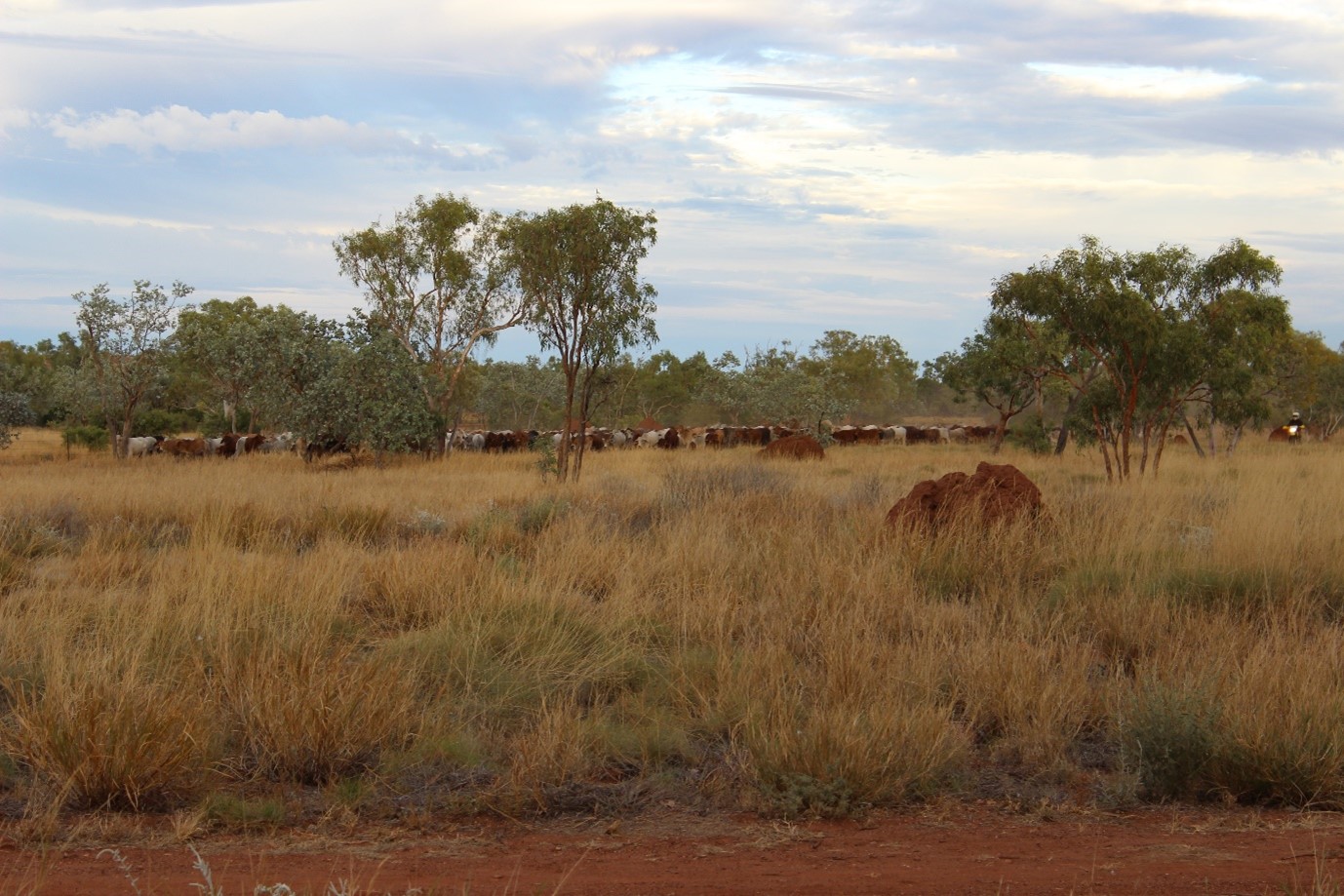
I stop occasionally to take some photos along the way for social media and other communication activities.
I arrive in the mid-afternoon and stop in at the homestead to say hello and drop off my bags. I have a quick cup of tea with the managers before heading off to the yards to see the stock camp yarding the cattle ready for the following day.
Later that afternoon we sit around a campfire before dinner and bed.
Thursday
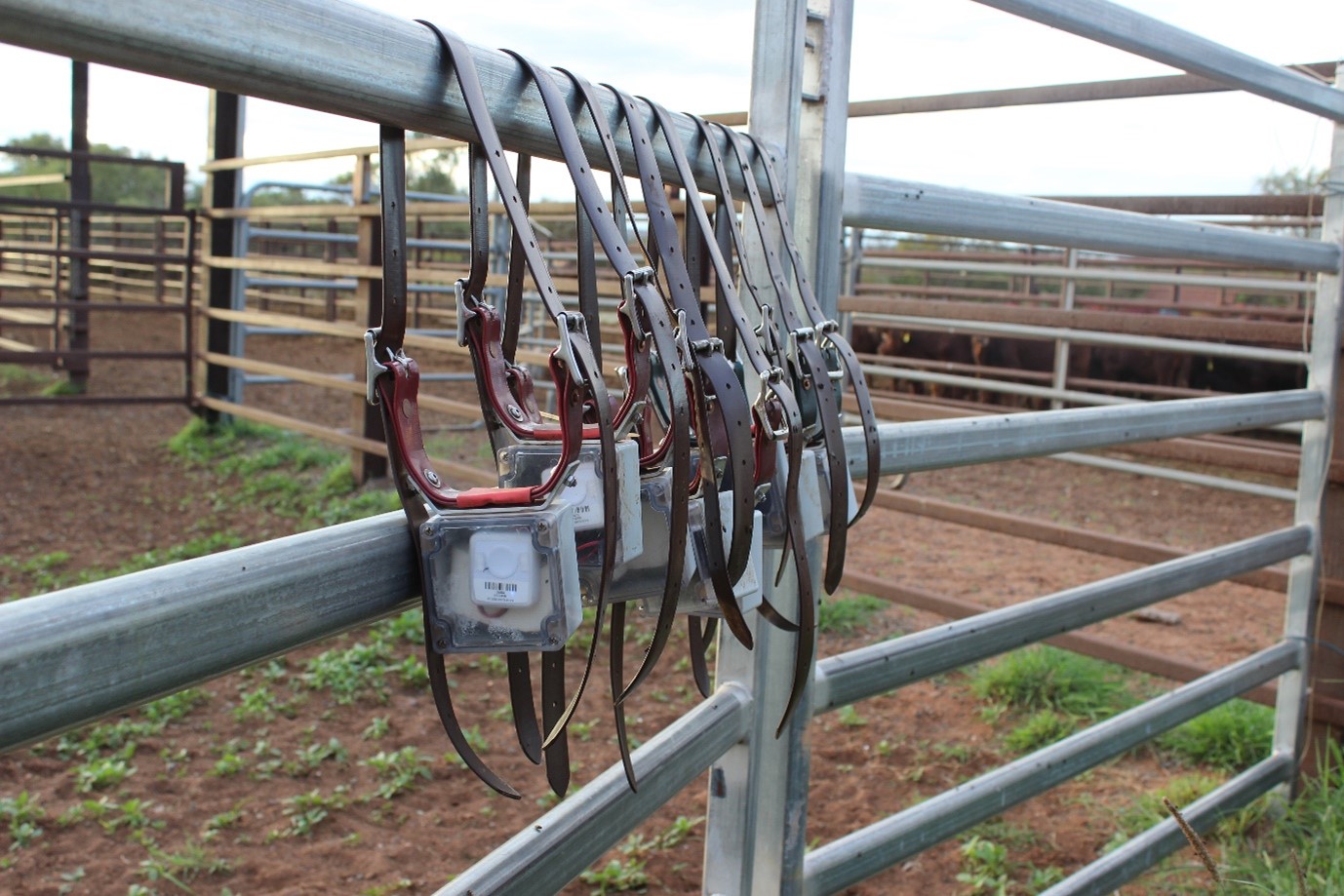 It’s a 4.30AM breakfast with the stock camp before heading off to the cattle yards. I unpack all the equipment including the 20 GPS collars. These collars will track the animal’s movements through satellite for the duration of the trial period whilst the accelerometers fitted to ear tags will capture standing and sitting behaviours.
It’s a 4.30AM breakfast with the stock camp before heading off to the cattle yards. I unpack all the equipment including the 20 GPS collars. These collars will track the animal’s movements through satellite for the duration of the trial period whilst the accelerometers fitted to ear tags will capture standing and sitting behaviours.
When we put together the different data sets, we’re looking to see if there is a different in behaviours between the groups to compare the effect of pain relief options. I place the GoPros on a high post so they can capture footage once the weaners have been processed. Later on, I’ll go over all the footage and make notes of the behaviour the weaners are exhibiting such as head shakes, sitting, eating, drinking. The oestrus activity paint will be used so the cameras can pick up the colours and I can see which animals are in which trial category (green for animals administered meloxicam as well as Tri-Solfen, orange as the control, blue for meloxicam only and pink for Tri-Solfen).
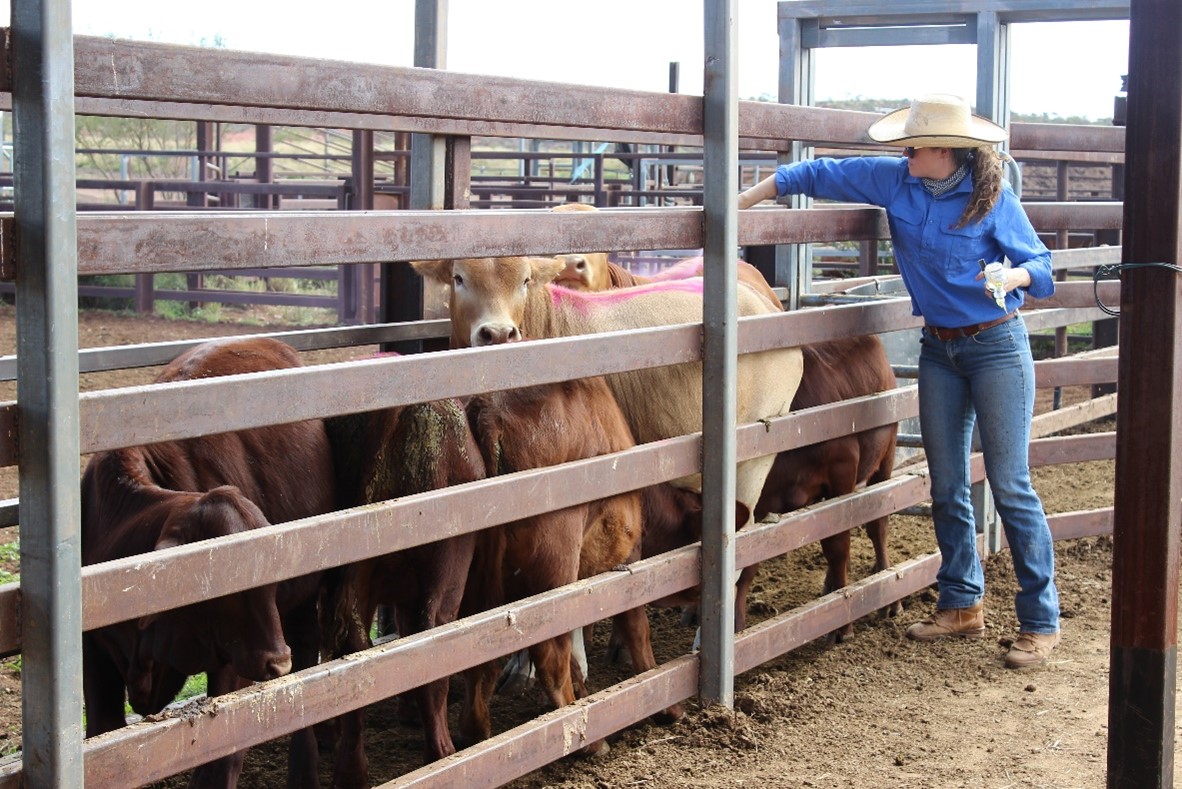 We start processing the 300 head of mickeys and heifers required for the trial. Each trial category requires 75 animals. Weaners are weighed and if they are between 140-240 kg they are selected in the trial. Polled heifers are not selected. Five animals from each treatment group will be randomly selected and fitted with an accelerometer ear tag and GPS collars around their neck.
We start processing the 300 head of mickeys and heifers required for the trial. Each trial category requires 75 animals. Weaners are weighed and if they are between 140-240 kg they are selected in the trial. Polled heifers are not selected. Five animals from each treatment group will be randomly selected and fitted with an accelerometer ear tag and GPS collars around their neck.
Those in the best practice and meloxicam trial will receive a dose of meloxicam at least 5 minutes before processing to ensure results are accurate. We stop for smoko and lunch throughout the day.
By 5.30 pm, we’re exhausted and have done the majority of the trial herd. We put everything away and make sure cattle are fed and watered before heading back to the homestead for dinner and an early bedtime.
Friday
We start Friday off similarly and have completed all the trial animals by smoko time.
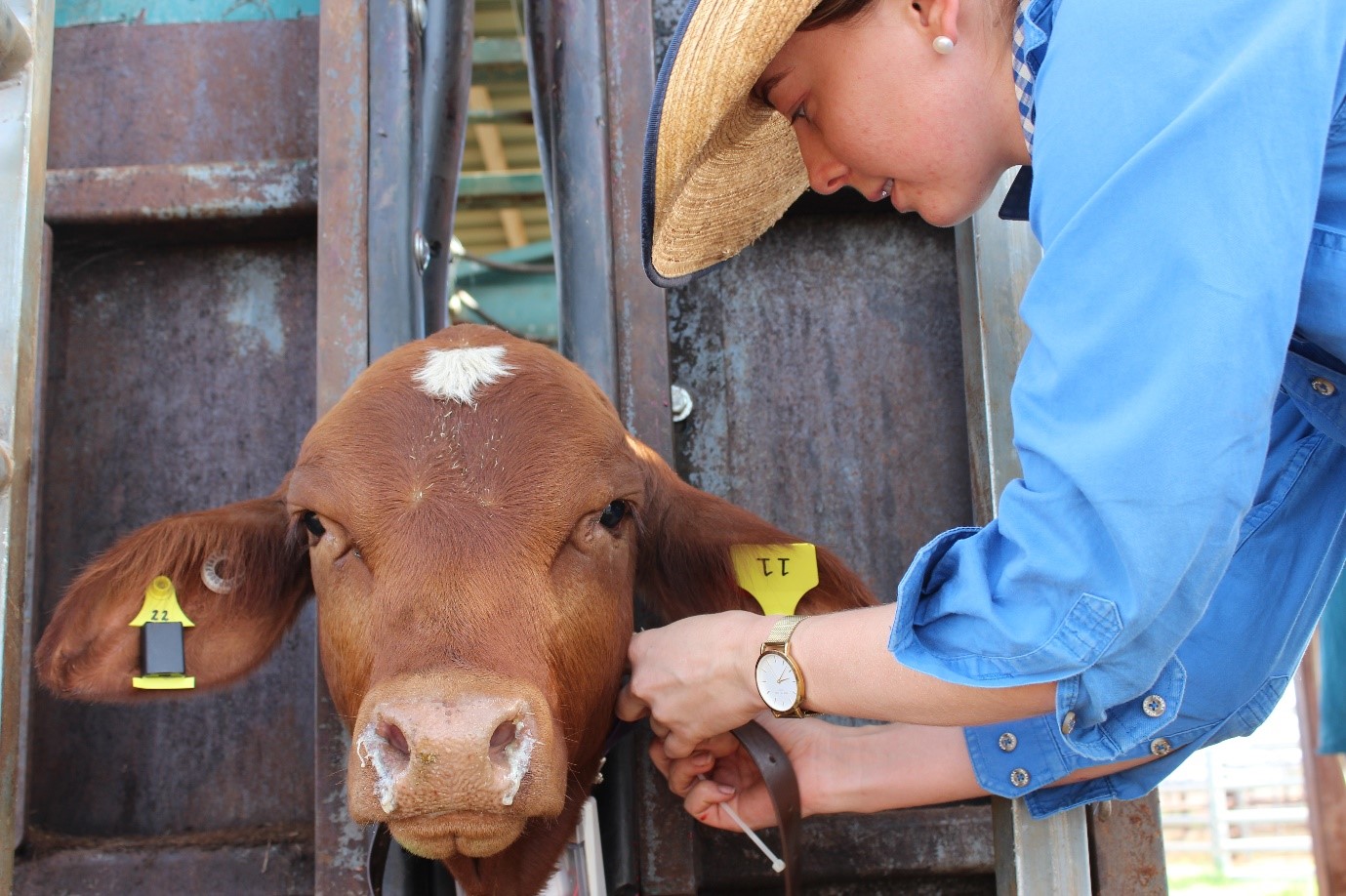 I head back to the homestead to have a quick cup of tea with the managers and show them some new technology our department has developed.
I head back to the homestead to have a quick cup of tea with the managers and show them some new technology our department has developed.
A key part of our job is to provide extension on new technology and research which could be beneficial to producers. DPIRD in conjunction with Landgate, have developed the Pastoral Remote Sensing (PRS) system, which allows producers and consultants to view ground cover, total green biomass, NDVI and historical seasonal rainfall across all WA pastoral leases.
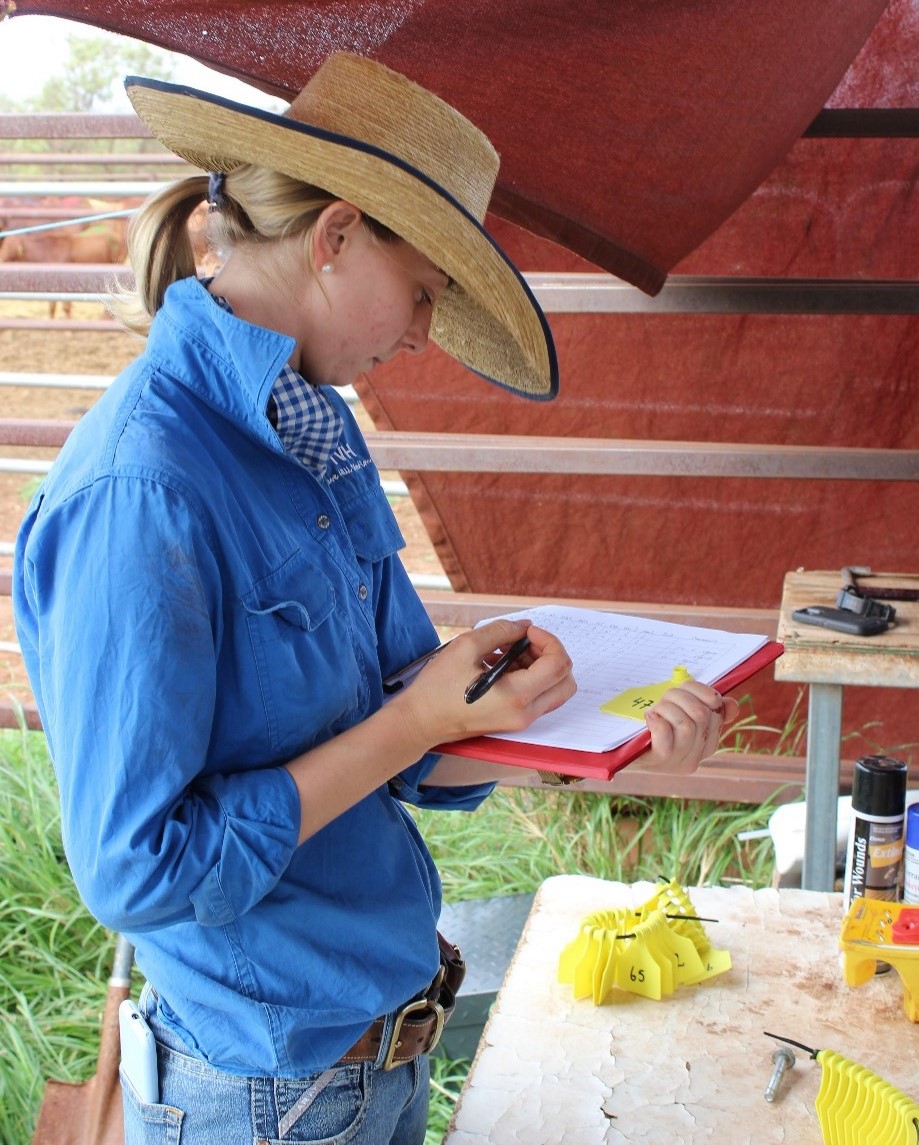
I go over how to use the mapping tool with the managers and how it could potentially benefit the way they manage their land.
After smoko, I say a quick goodbye – I’ll be back in three weeks’ time to check each animal and give them an assessment on their recovery from the weaning process.
I start the long drive back to Kununurra just in time for the Kununurra rodeo!
The rest of us in the FutureBeef team would like to thank Sarah for sharing her week with us! We are grateful to have her in our widespread team!